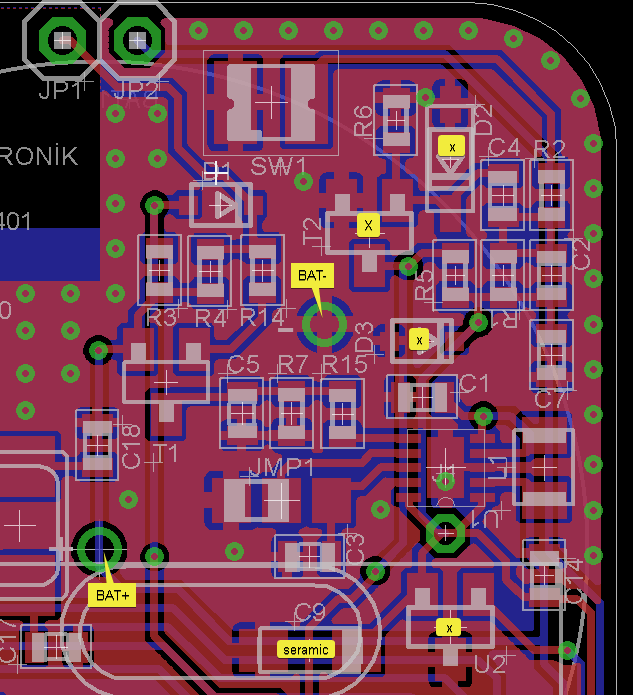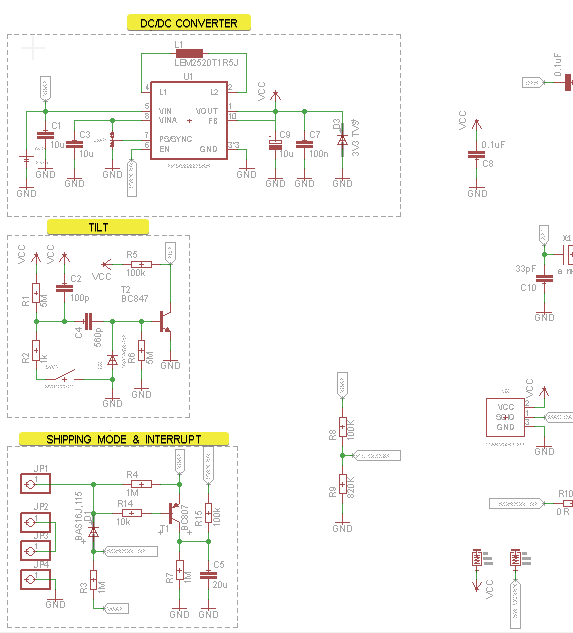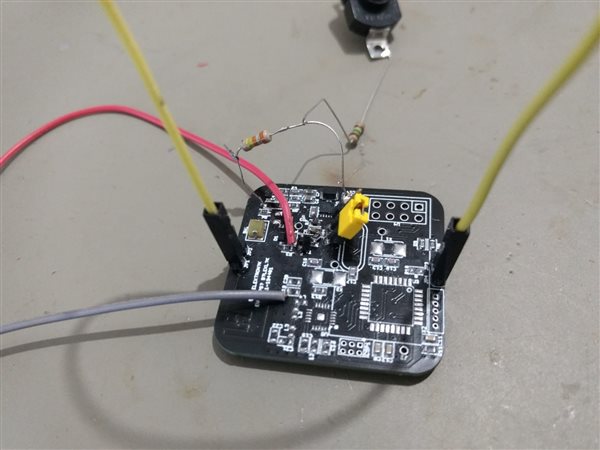Other Parts Discussed in Thread: TPS63031
Hi,
We used TPS63030 on a tracking system. The idle current (even nothing assembled on the board except power circuit) if around 4mA. We couldn't decrease it.
The board includes Atmega328p + NRF24L01 (all on board, not arduino etc). The battery is lithium 3.7V 1700mAh non-rechargeable. The device has to run in normal operation mode at least 18 months. So our device must work under 131uAh.
So we run MCU and RF with 1/400 duty cycle. But the idle current consumption is still too high. We enable TPS63030 with a contact based shipping mode trigger. What should we do? How can we use quiescent current feature? I suspect that the converter can wake up itself. Or what product should we use?




